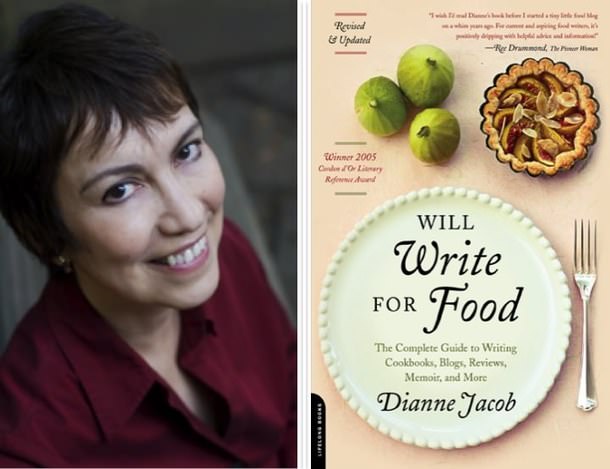One thing I love about being a food blogger, writer and recipe developer is that every eating experience can be considered ‘research.’ In the name of ‘research’ I’ve eaten six meals a day and spent countless hours (and money) in produce markets, restaurants and cafes like The Acland Cake Shop in St Kilda, Victoria — see above — which we visited last week.
But probably the thing I love most about being a food blogger is that this blog brings me into contact with all sorts of amazing and inspiring people who are passionate about food.
Last year I met Dianne Jacob, noted American food writing coach, when she visited Australia to deliver the keynote speech at Eat Drink Blog 3, the 3rd Australian Food Bloggers Conference. Dianne has had a long and distinguished career as a food writer, editor, author and coach and her book, Will Write for Food, is considered by many food bloggers as essential reading.
Not all writers are good conversationalists but in person Dianne was warm and gracious and a wonderful storyteller. We had a group dinner and then a lunch together and I enjoyed hearing about Dianne’s life and her adventures in the food writing world.
I’m always looking to improve the way I write about food so I was thrilled when Dianne agreed to be interviewed for this blog.
Q&A with Dianne Jacob
Christina: What are three simple things anyone can do to improve their food writing?
Dianne: Use fewer adjectives, connect the food to a story, and incorporate action verbs.
C: What is editing and how important is it?
D: Editing comes into play once you get your thoughts down in a draft. Your piece needs to be organized in a logical way, with all extraneous material deleted. Cutting is paramount. It’s how you focus your piece tightly, where it comes together as a whole and every paragraph works towards the whole. You also want to make sure the beginning grabs people, and the ending sums up the piece in some way and doesn’t just trail off. Then you tighten each sentence by making every word count. Editing is the most time consuming part of writing.
C: What do great food writers have in common?
D: The ability to evoke emotions by creating scenes based on the senses. The best writers know how to make writers feel like they were there, actively engaged in the scene, rather than just sitting by passively. Readers can smell, taste and see the food, and the story around it evokes memories or responses.








